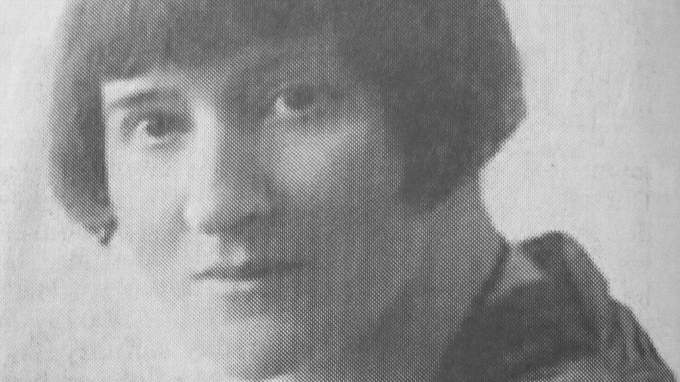A CRIME writer who penned the story behind Alfred Hitchcock’s masterpiece The Lady Vanishes is set to have a QR code point unveiled at her former home, 145 years after being born there.
Ethel Lina White was born in Abergavenny’s Frogmore Street, in what is today a hair parlour, and was compared to Agatha Christie and Dorothy L Sayers in her later years after linking up with the master director.
But while their fame has lived on, she has been somewhat forgotten, something the Abergavenny History Society hopes will change with the installation of a HistoryPoints QR code telling her story nearly 80 years on from her death.
A blue plaque already exists at her birthplace, today occupied by the Serendipity hair salon.
Born in 1876 to builder William White and wife Eliza, Ethel wrote from an early age, but didn’t become famous until her 60s, when her story used for The Lady Vanishes helped launch Hitchcock’s Hollywood career.
By then, and despite her modest beginnings, her family had come into a fortune, owing to her father inventing and patenting Heigia Rock in 1881, a waterproof compound of bitumen and cement used to build the London Underground.
Her father later built Fairlea Grange in Belmont Road, where Ethel was still living in 1911 aged 35.
And Sheffield Hallam student Alex Csurko, who is embarking on a PhD on Ethel, believes their new found wealth gave her the chance to indulge her passion for writing, penning “dozens of poems and short stories published in the press” by her mid-30s.
He also told BBC News she grew up at Fairlea surrounded by literary images of Walter Scott’s novels in the drawing room, and Charles Kingsley’s Water Babies in a bedroom.
After joining The Ministry of Pensions in the First World War and moving to London, her career began to take off, having her first full-length mainstream novel published in 1927, and a play performed in the West End, The Port of Yesterday, the following year.
Her first crime novel Put Out The Light was published in 1931, and she went on to write another 13.
But it wasn’t until her ninth detective mystery, when Hitchcock chose her 1937 novel The Wheel Spins about a beautiful young woman on a train and her missing companion as the basis for The Lady Vanishes in 1938, that her fame rocketed.
Midnight House was also later filmed as The Unseen, while The Spiral Staircase was based on her novel Some Must Watch.
Alex added: “The amazing thing about Ethel is that, despite writing all her life, she wasn’t truly recognised until she was in her 60s.
“Maybe it took her move to London before she was introduced to the right people?”
Sadly, she didn’t have long to enjoy her time in the spotlight, dying in 1944 aged 68 from cancer.
On top of that, she was never one for courting publicity, Alex saying: “She simply wasn’t prepared to play the fame game which made stars of other writers.
“In an interview with critic Peter Cheyney, she said: “I was not born. I have never been educated and have no tastes or hobbies. This is my story and I’m sticking to it”.”
Penguin Books said in the 1950s that her books “won her universal recognition as a master of the macabre and a writer worthy of comparison with Edgar Allan Poe”.
She was “strongly of the opinion that thrillers should be well written and would write and rewrite her manuscript until she was satisfied with it”.
Some of her books are still in print, despite her being less well known than her literary rivals of the time, such as Christie and Sayers.
And Alex adds: “She took a style in its infancy and added so many threads of classical literature to it - for example her first detective novel, Put Out The Light is a direct reference to Othello.”
Her career bears a similarity to another Monmouthshire queen of the detective novel, whose life was cut short after penning five acclaimed novels.
Dorothy Bowers, who grew up and lived in Monmouth and attended the girls’ school, saw her fourth book – Fear for Miss Betony – heralded by the Times Literary Supplement as the best mystery novel of 1941.
But sadly she died just four years after Ethel Lina White at the age of 46, and despite being the only inductee of The Detection Club of Golden Age crime writers in 1948 shortly before her death, her work also became largely forgotten.
However, after being included in a national newspaper list of forgotten writers you should read, her works were republished four years ago by Moonstone Press.





Comments
This article has no comments yet. Be the first to leave a comment.